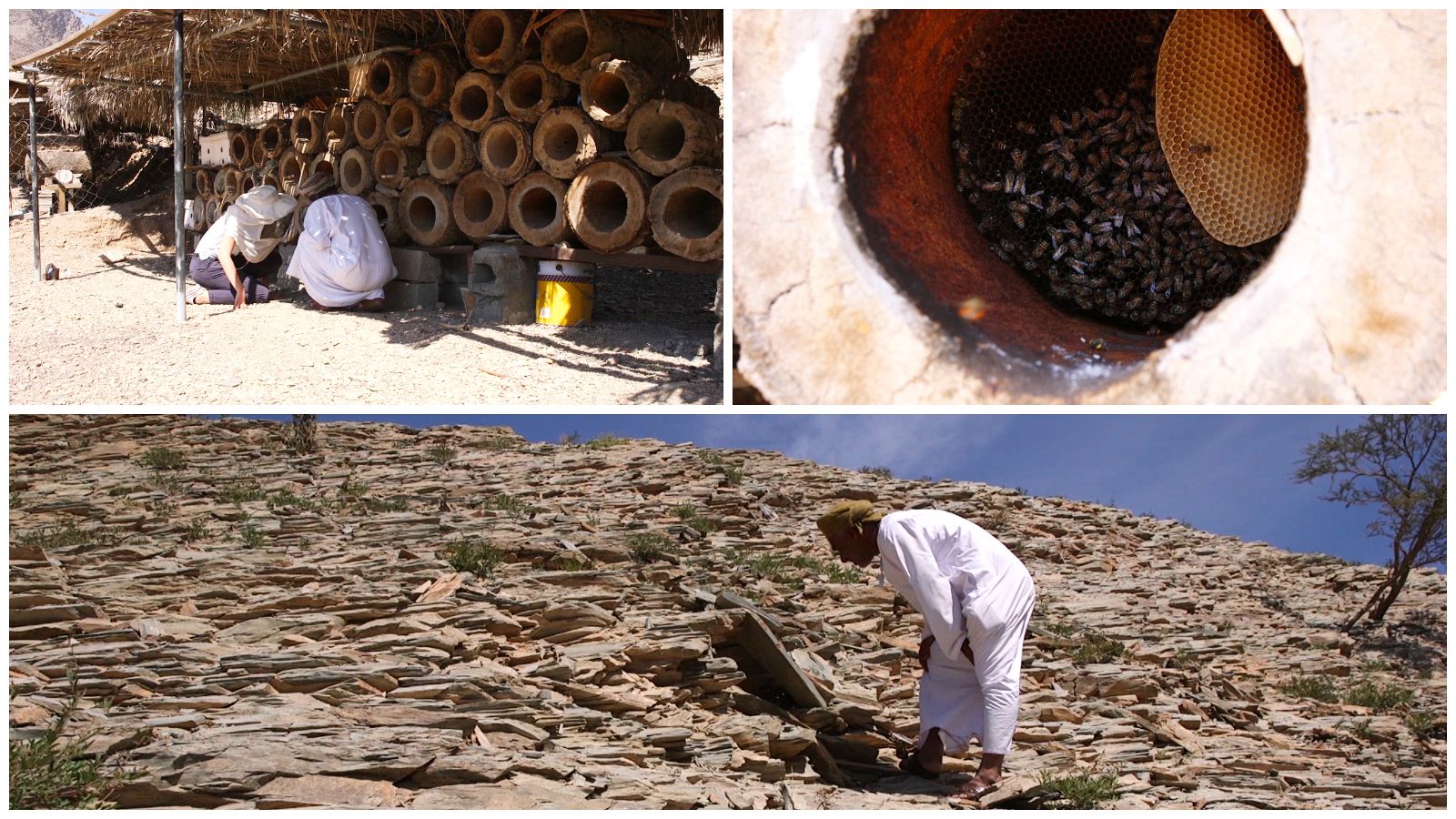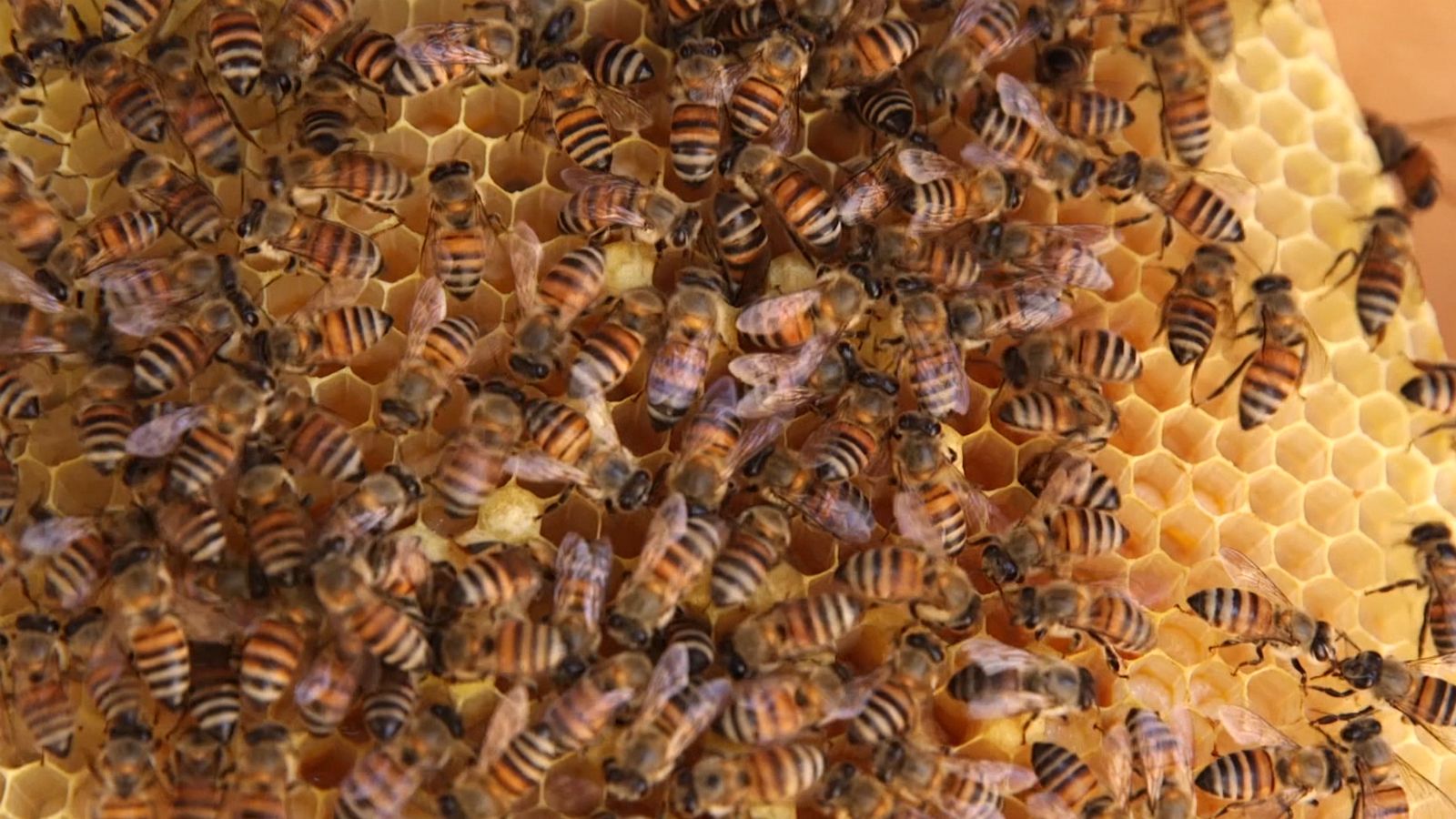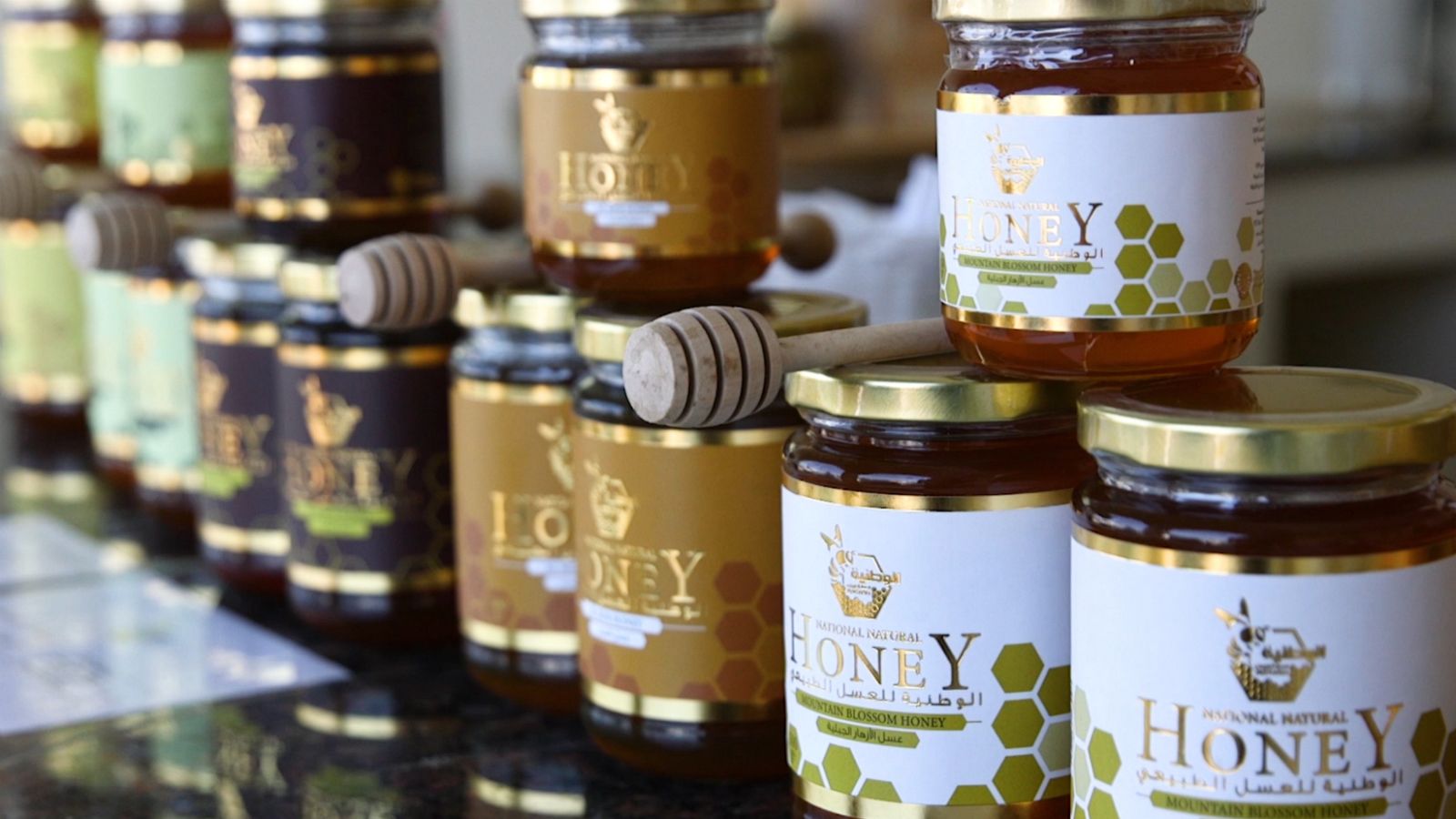Inspire middle east
In the Al-Hajar mountain chain of northern Oman, what appears to be just a pile of logs is actually an apiary of beehives.
This is a centuries-old method of beekeeping which has been passed down from one generation to the next.
And in the traditional Omani method, the bees form a hive in a hollowed out palm tree.
The thickness of the trunk protects them in both hot and cold temperatures, from winter to summer.
Omani bee-hunters track the insects from their water source to the naturally formed hives, hidden in the mountains.

Traditional method of beekeeping using logs in Oman (top right and left); a bee-hunter tracks hives in the Omani mountains (bottom)
Unfortunately, these ancient techniques are dying, with most of the country’s beekeepers moving towards more cost-effective modern beehives.
Dr. Hassan Al Lawati, who works in the Ministry of Agriculture’s honey bee research department, explains that the latest, cutting-edge methods help beekeepers monitor their bees more efficiently.
“It’s easy to observe, to see the hive situation, if they are active, if they are sick. Or if they need food.” he says, “With the trunk, it’s more difficult.”
BEE BUISNESS
With Oman’s diverse landscape, the country is able to produce many varieties of honey. The blossoms of Acacia tortilla trees in the northern mountains yield Al Somer Honey, while the Frankincense trees in the south create Al Luban Honey.
As Oman attempts to diversify its economy away from its dependence on oil, the government is developing other industries like agriculture.
Free apiary trainings is offered, with the aim of expanding the honey sector and going some way to solving Oman’s high unemployment.

Omani honey production
Today, Oman is home to more than 5,000 honey farmers and more than 100,000 hives.
Last year, its estimated that in excess of 600 tones of honey was produced and sold for a total of 35 and a half million euros (over 40 million US dollars) .
Mir Adil Ali, who manages a honey shop in Muscat, says the industry is being given a boost by rising demand for bee-related products.
“People are trying to get into the honey business, as well as trying to get more innovative methods of producing honey,” he says. “They see a lot of scope for honey, and the consumption level in Oman is much higher than most of the Middle East countries.”
With demand often outweighing supply, prices of pollen, royal jelly and pure honey for the global consumer can sting. A pot of Al Luban Honey, for example, can cost around 80 euros (91 US dollars).

Different varieties of Omani honey
As for Omani locals and residents elsewhere in the Gulf, it would seem that they are not only attracted to honey’s sweet taste but also to its medicinal and cosmetic qualities.
To cater for demand, clinics and spas using bee products have popped up from Muscat to Abu Dhabi. They offering a wide range of treatments including honey-based massages, and for the brave there’s even a ‘bee-venom’ facial.
SEEN ON SOCIAL: SWEET FINDINGS
Wildlife conservation student Rabab stumbled upon this beehive in her backyard in Oman.
View this post on Instagram A pretty cool colony of Omani Dwarf Honey Bees (Apis florea) in our backyard. Along with their sister species (Apis andreniformis), these bees make up one of the most ancient honey bee lineages. Dwarf honey bees tend to build their open nests around small branches or twigs and away from direct sunlight, managing to easily stay undetected for long periods of time. However, due to their small colony size, they only produce a single comb with very little honey. The nest itself is covered in a layer that is typically 3-4 bees thick, making it a rather interesting display to watch. ?? . . . . . #oman #muscat #omanibees #omanihoney #honey #honeycomb #honeynest #beecolony #dwarfbeecolony #dwarfbees #Apisflorea #andreniformis #ancientbeelineage #ancientbees #wildlife #wildbees #natureisamazing #openbeenest #interestingdisplay #aflorea #middleeastbees #insects #Hymenoptera #Apidae #apis #honeybees #honeybeenest #smallcolony #wildbeecolony
A post shared by Rabab ☁️ | 19 (@rababallawati) on Jan 10, 2019 at 4:20am PST













02:20
France: Avignon Festival celebrates Egyptian diva Umm Kulthum
01:42
Gaza conflict overshadows EU-Southern Neighbourhood talks in Brussels
02:19
Thriving, not just surviving: Gloria Gaynor releases new EP
Go to video
Angélique Kidjo makes history as first black African artist on Hollywood Walk of Fame
01:05
Ethiopia's mega-dam on the Nile is "now complete", Prime Minister says
01:30
Nigerian singer Tems launches Leading Vibe Initiative to support women in music